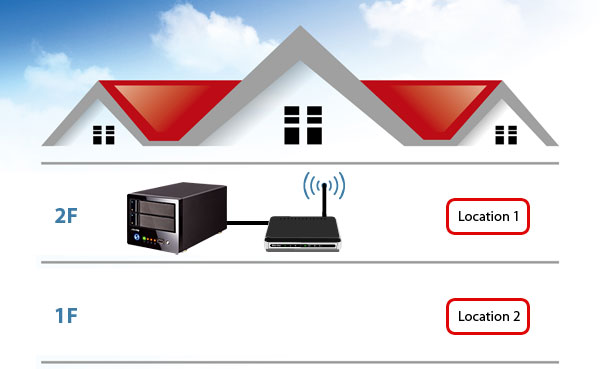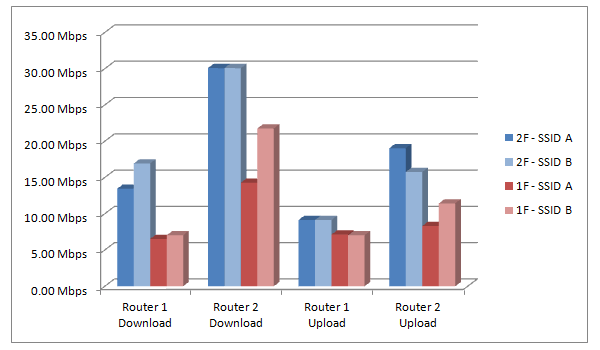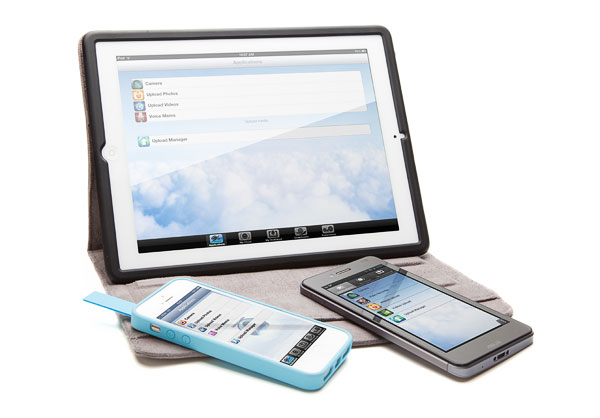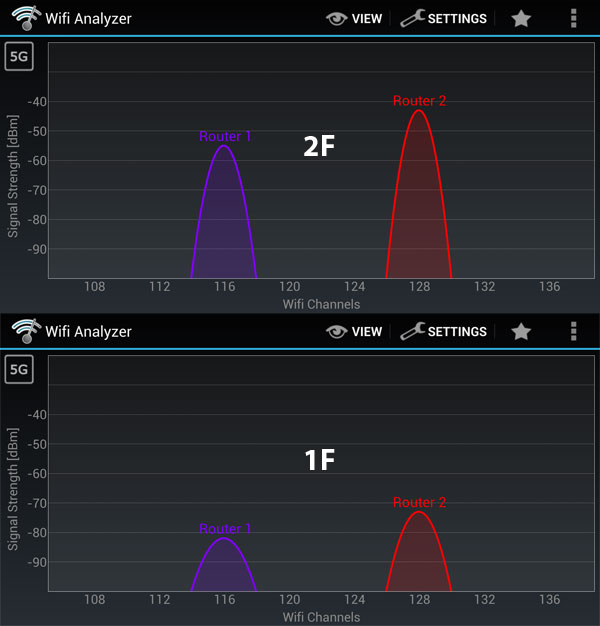This is the story of my quest to achieve better transfer rates on my wireless home network. The goal was to reduce the time it takes to download and backup files from my mobile devices to the network attached MyCloud Pro.
Until recently, the wireless connection on all of my mobile devices like the iPhone 5 and iPad 4 was based on the 802.11a/b/g/n standard but I've always wondered if it would make a difference if I upgraded the old wireless router (AP) from 802.11a/b/g/n to 802.11ac (Draft) /n/a/g/b. In short, the answer is YES.
Following is a summary of my experience with before and after results. Of course, upgrading just the AP alone is only half the fun, so I'm now also the proud owner of a mobile device (Padfone Infinity from Asus) that is capable of making full use of the new 802.11ac standard.
Test Environment
This test was done at my home and the transfer rates were calculated by measuring how long it takes to transfer a certain file from and to the MyCloud Pro using the free MyCloud App. This is by no means a professional testing environment but simply the results of my personal experience.
- Mobile devices: Padfone Infinity (Android 4.1.2), iPad 4 (iOS 6.1.3), iPhone 5 (iOS 6.1.3)
- Wireless router 1: Corega CG-WLBARAGND (SSID A = 5 GHz 11a/n, SSID B = 2.4 GHz 11g/b)
- Wireless router 2: Buffalo WZR-1750DHP (SSID A = 5 GHz - 11ac/n/a, SSID B = 2.4 GHz - 11n/g/b)
- Network drive: MyCloud Pro (20130607)
- App: AKiTiO MyCloud App (1.8.0)
- File: 1 x 57MB video file

Padfone Infinity - Before & After
It comes as no surprise, the brand new router with the latest 802.11ac standard is clearly faster. In average, it's about twice as fast and in some cases even almost three times as fast.

iPhone 5 and iPad 4
For technical reasons, the comparison above was all done with the Android based Padfone Infinity. The iPhone simply didn't get a signal for the older router in the second test location and upload speeds could not be used, because the test file was not identical. Additionally, it took too long to compress and upload a video file when compared with the Android based device.
Still, to see if at least the download speed can be improved, I did run a few tests. The download speeds on the old router are nothing unexpected and pretty much the same like the Padfone seen above but for some reasons, the transfer rates on the new router are extremely fast. As an example, with the iPhone 5 on the 2nd floor, the download speed was 50.78 Mbps. The iPad 4 was even faster with 76.16 Mbps on the 2nd floor and 50.78 Mbps on the 1st floor.
In conclusion, I found that the new router does make a difference and the download speeds on the iOS devices are very fast, assuming that a connection can be established but uploading a video takes far too long, especially when the time it takes to compress the file before the upload actually starts is added to the result.

Signal Strength
The strength of the signal is a deciding factor on the resulting transfer rate. I found that the router does make a little difference and it did help getting better speeds and signal coverage on the 2nd floor but the mobile device itself also matters greately.
In the example of my three test devices, the iPad 4 easily beats the others but the Padfone Infinity did a pretty good job as well. The iPhone 5 on the other hand was just simply bad and it is very difficult to get a good signal unless you are close to the AP. The new router did make it possible to finally get a signal for the iPhone 5 on the second floor but the connection was weak and it dropped the connection more often than not, even in the middle of a file transfer.
A special case with extendable antenna (Linkase from Absolute) for the iPhone 5 didn't really help much, so the only usable option is to setup another AP on the 2nd floor. I did stop short of trying to boost the WiFi antenna with a pringles can or some aluminum foil.

Conclusion
The new router with the 802.11ac standard provides both more speed and a bit more signal coverage, which resulted in better transfer rates no matter if the mobile device already supports 11ac or still runs on the older standard. However, depending on the environment and the device (yes, I'm talking about the iPhone 5 here), a second AP might still be the better solution and indeed required. If you need an excuse, get a new router based on the 802.11ac standard and use your old one as a second AP in areas that have a weak signal coverage (wired connection to second AP).
If you plan on uploading a lot of videos from your iOS device to the MyCloud, you might want to consider synchronizing your files with the computer first and then uploading those videos from the computer, rather than using the MyCloud App to upload the files directly from the mobile device.
On a side note, the Padfone Infinity wasn't all too happy with my old router. It was possible to connect but it often took a while before it could establish a connection. This problem went away with the new router. The iPhone and iPad on the other hand always got linked up very quick and without fuss as long as they got a signal.


